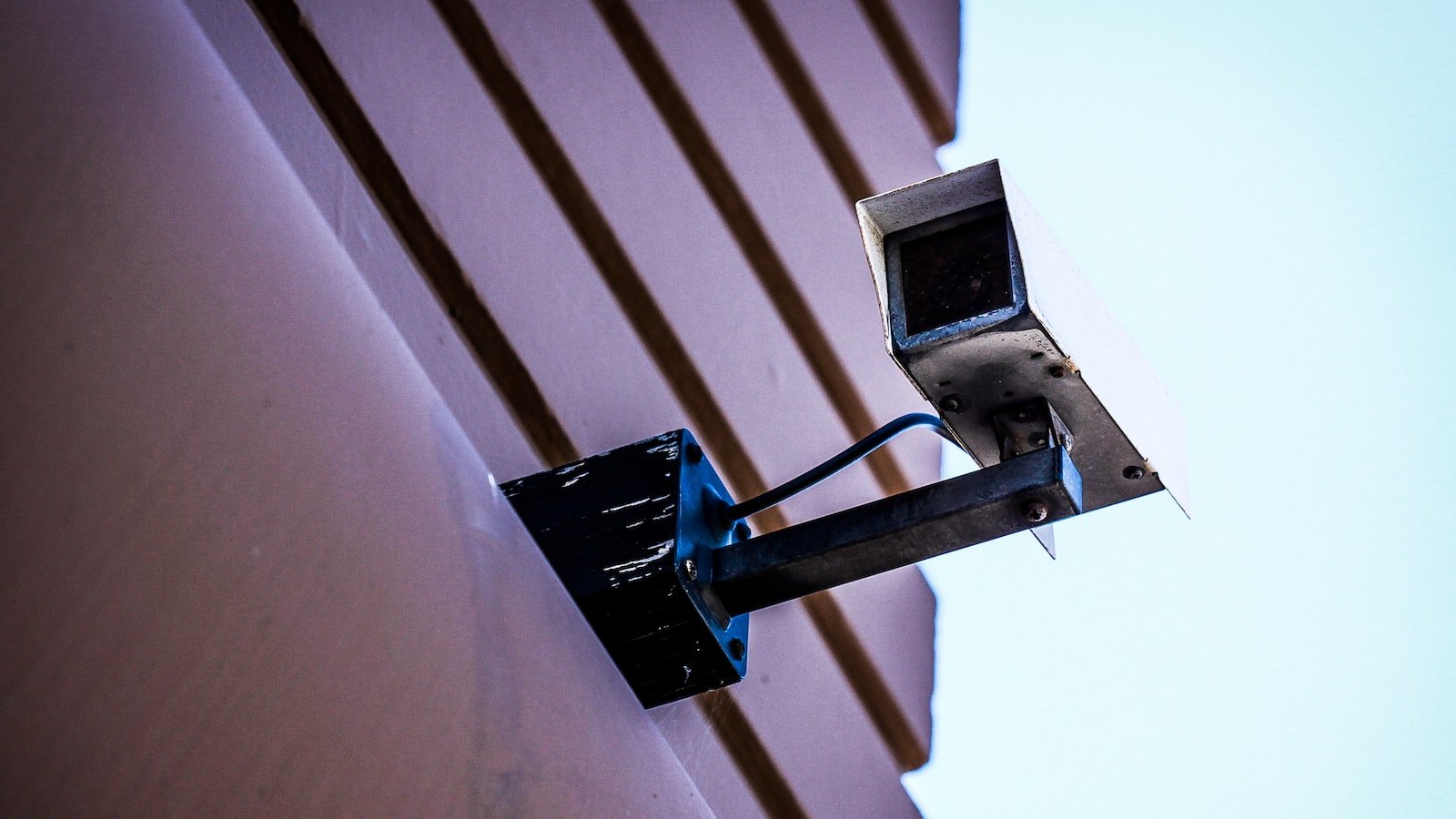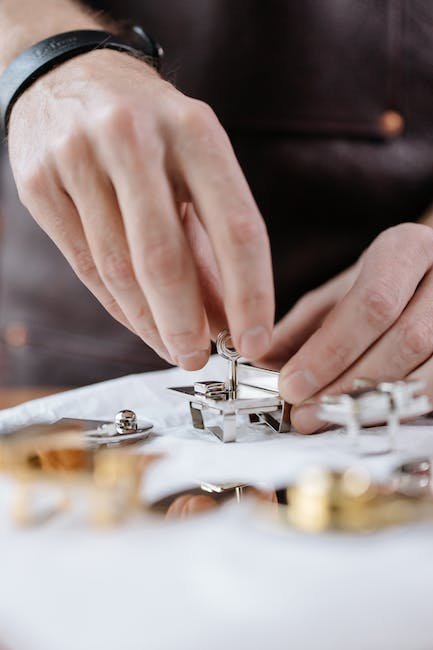As dusk fades into the twilight hours, a lone cyclist stands by an empty bike rack, staring at the gleaming frame of their beloved two-wheeled companion. The connection between a rider and their bike is undeniable; it’s an extension of their freedom and a conduit to explore the world. But in a world plagued by the prowling eyes of thieves, securing your bike becomes a necessity. It’s a delicate dance where the key is finding the perfect balance between convenience and fortress-like protection. In this article, we’ll delve into the realm of locks and strategies, equipping you with the knowledge to keep your cherished ride safe from the clutches of those who would seek to snatch it away. So buckle up, pedal on, and let’s dive into the world of safeguarding your bike like a seasoned secret agent.
Table of Contents
- Protect Your Investment: The Importance of Bike Security
- Choosing the Right Lock: Types and Features to Consider
- Locking Techniques: Effective Strategies for Securing Your Bike
- Additional Security Measures: Enhancing Protection for Your Bike
- Tips From the Pros: Expert Recommendations for Bike Security
- Q&A
- The Conclusion

Protect Your Investment: The Importance of Bike Security
When it comes to your beloved bicycle, security should be a top priority. Ensuring the safety of your investment not only brings peace of mind, but also keeps thieves at bay. Here’s why bike security matters and what steps you can take to protect your two-wheeled treasure.
Key reasons why bike security plays a crucial role:
- Prevents theft: Bicycles are unfortunately a prime target for thieves due to their portability. By implementing effective security measures, you significantly decrease the risk of your bike being stolen.
- Preserves investment value: High-quality bikes can be quite expensive investments. Protecting your bike means safeguarding the value you’ve put into it, allowing you to enjoy its benefits for years to come.
- Enhances peace of mind: knowing that your bike is secure provides a sense of relief, whether you’re leaving it unattended during a quick errand or overnight.
Tips for ensuring top-notch bike security:
- Invest in a quality lock: A robust, durable lock is an essential tool for keeping your bike safe. Opt for a U-lock or a heavy-duty chain lock that is resistant to bolt cutters.
- Choose secure parking locations: Whenever possible, park your bike in well-lit areas, near surveillance cameras, or in designated bike racks. Avoid secluded or hidden spots that facilitate theft.
- Record your bike’s details: Keep a record of your bike’s serial number, brand, and any other identifiable features. This information will be crucial if your bike ever gets stolen.
- Consider bike insurance: Explore the possibility of obtaining insurance coverage specifically tailored for bicycles. This coverage can provide financial protection if your bike is stolen or damaged.
By prioritizing bike security, you can enjoy the freedom and joy of cycling while minimizing the risks associated with theft. Remember, a well-protected bike ensures many memorable rides ahead!

Choosing the Right Lock: Types and Features to Consider
When it comes to ensuring the security of your home or office, selecting the right lock is of utmost importance. With a wide range of options available in the market, it can be overwhelming to find the perfect fit for your needs. Here are some essential types of locks and features that you should consider:
- Deadbolt Locks: Considered the gold standard in security, deadbolt locks provide exceptional resistance against forced entry. They are typically made of solid metal and have a sturdy bolt that extends into the door frame, offering superior strength and protection.
- Keyless Entry Locks: Perfect for those who desire convenience without compromising on security, keyless entry locks eliminate the need for keys. Instead, they rely on codes, fingerprint recognition, or even smartphone connectivity to grant access. These locks provide flexibility and allow you to monitor and control access more efficiently.
- Smart Locks: Taking security to the next level, smart locks integrate technology into your home or office’s security system. These locks can be controlled remotely, provide activity logs, and even offer temporary access codes for guests. Pairing convenience with enhanced security features, smart locks are becoming increasingly popular.
When selecting the right lock, it’s essential to consider factors like durability, installation requirements, and compatibility with your existing doors. Take the time to evaluate the security needs of your premises and consult a professional if necessary. Remember, investing in the right lock today can provide peace of mind and safeguard your property and loved ones for years to come.

Locking Techniques: Effective Strategies for Securing Your Bike
Protecting your bike from theft is crucial, especially in today’s world where bike theft is unfortunately all too common. Utilizing effective locking techniques will greatly increase the security of your beloved bicycle and give you peace of mind. Here are some strategies to consider:
- Invest in a high-quality lock: A sturdy, durable lock is your first line of defense against bike theft. Look for locks made of hardened steel or titanium, as they are more resistant to cutting and corrosion. It’s worth the investment to ensure the safety of your bike.
- Use multiple locks: Doubling up on locks can significantly deter thieves. Consider using a combination of a U-lock and a heavy-duty chain lock to secure both the frame and the wheels of your bike. This makes it more challenging for thieves to quickly dismantle and steal your bike.
- Secure your bike to a fixed object: Always lock your bike to a sturdy, immovable object, such as a bike rack or a metal post. Avoid locking your bike to flimsy objects that can be easily manipulated or removed.
- Lock the frame and wheels: Thoroughly secure your bike by passing the lock through both the frame and one or both wheels. This ensures that any potential thief will have to work harder to steal your bike or parts of it.
By following these effective locking techniques, you can significantly reduce the risk of your bike being stolen. Remember, the goal is to make your bike less appealing and more challenging to thieves, ultimately keeping it safe and secure for years to come.
Additional Security Measures: Enhancing Protection for Your Bike
When it comes to keeping your bike safe and secure, a basic lock might not always be enough. That’s why we’ve compiled a list of additional security measures that will take your bike protection to the next level.
- Heavy-duty U-lock: Consider investing in a heavy-duty U-lock made of hardened steel. These locks provide superior resistance to cutting and leverage attacks, making it extremely difficult for thieves to break through.
- Alarm system: Installing an alarm system on your bike is an excellent deterrent. The loud, piercing sound will startle any would-be thief and draw attention to their unwanted activities. Some alarm systems even come with a motion sensor feature, which activates when anyone tries to tamper with your bike.
- GPS tracking device: For the ultimate peace of mind, opt for a GPS tracking device specifically designed for bikes. These small, discreet devices can be hidden within your bike’s frame or handlebars. In case of theft, you can track the location of your bike in real-time using a smartphone app or web portal, increasing the chances of recovery.
Remember, the more security measures you take, the less likely your bike is to be stolen. By implementing these additional measures, you can enjoy your rides with the confidence of knowing that your bike is well-protected.
Tips From the Pros: Expert Recommendations for Bike Security
Bikes are not only a means of transportation but also a valuable investment. Protecting your bike from theft or damage is essential. We have gathered some expert recommendations to help you enhance your bike security.
- Invest in a quality lock: A sturdy lock is the primary defense against bike theft. Opt for a durable U-lock or heavy-duty chain lock that is resistant to cutting or picking.
- Secure your bike to a fixed object: Always lock your bike to an immovable object such as a bike rack or a sturdy post. This will make it difficult for thieves to simply lift the bike and walk away with it.
- Choose high-traffic, well-lit areas: When parking your bike, select visible locations with good lighting. Thieves are less likely to target bikes in areas where they can easily be seen.
- Mix up your locking technique: Incorporate multiple locks if possible, such as securing both the frame and wheels. Employing various locking techniques makes it more challenging for thieves to dismantle or steal specific parts.
- Register your bike: Take advantage of local bike registration programs or online bike registries. Registering your bike increases the chances of recovery in case of theft and aids the authorities in identifying stolen bikes.
Your bike deserves the best protection possible. By following these expert recommendations, you can significantly decrease the risk of theft and ensure your beloved bike stays safe and secure.
Q&A
What are the most secure types of bike locks?
The most secure types of bike locks are U-locks and heavy-duty chain locks. These locks are made of hardened steel and provide a high level of resistance against cutting and picking.
Are combination locks a reliable option?
Combination locks can be reliable if they are made of high-quality materials and have a strong mechanism. However, they may not be as secure as key-operated locks because the combination can be guessed or accidentally revealed.
How should I lock my bike to ensure maximum security?
For maximum security, it is recommended to lock your bike through the frame and one of the wheels to a fixed and immovable object. This prevents thieves from easily removing the bike or its components.
Should I use multiple locks?
Using multiple locks can add an extra layer of security to your bike. It is best to use different types of locks, such as a U-lock and a chain lock, to make it more difficult for thieves to bypass them.
What are some additional strategies to secure my bike?
Aside from using a strong lock, consider parking your bike in well-lit areas with high foot traffic. Removing any accessories or valuables can also make your bike less attractive to thieves. Lastly, registering your bike with your local authorities or an online database can aid in recovery if it gets stolen.
How often should I check the condition of my bike lock?
It is important to regularly check the condition of your bike lock, especially for any signs of wear, damage, or weak spots. Replace your lock if you notice any issues to ensure continued security for your bike.
Are there any additional anti-theft devices I can use?
Yes, there are additional anti-theft devices you can use, such as wheel locks, alarm systems, and tracking devices. These can provide added peace of mind and increase the chances of recovering your bike in case of theft.
The Conclusion
And there you have it, a comprehensive guide on how to secure your trusty steed and ensure its safety in our bike-hungry world. We’ve explored an array of locks and their strengths, delved into cunning strategies to outsmart even the craftiest thieves, and provided insights into the evolving landscape of bicycle security.
Remember, your bike is more than just a mode of transportation; it’s a companion, an accomplice to countless adventures, and a symbol of your freedom. So, treat it with the respect it deserves and cloak it in an impenetrable shield of protection.
As you venture into the world with your two-wheeled companion, be vigilant, but don’t let fear cloud your joy. Keep these strategies close at hand, and never underestimate the importance of being prepared. With the right locks and strategies on your side, your bike will remain firmly anchored to your life.
Now, armed with knowledge and empowered by the latest bike securing techniques, go forth and conquer the urban jungles or traverse scenic trails with peace of mind. Let the wind be your guide, and may your bike continue to take you on endless adventures.
So, lock up, gear up, and pedal forward, knowing you’ve taken the necessary steps to protect your beloved bike. Remember, securing your bike isn’t just about preventing theft, it’s about safeguarding the cherished memories and the pure exhilaration that comes with every ride.
So, fellow bike enthusiasts, go out and embrace the cycling world with confidence. Spread the word, share the knowledge, and together, let’s create a community of vigilant riders who refuse to let their beloved bikes fall into the wrong hands.
Safe travels, happy pedaling, and may your journeys be filled with endless adventure and unlocked possibilities!
As an affiliate, my content may feature links to products I personally use and recommend. By taking action, like subscribing or making a purchase, you’ll be supporting my work and fueling my taco cravings at the same time. Win-win, right?
Want to read more? Check out our Affiliate Disclosure page.